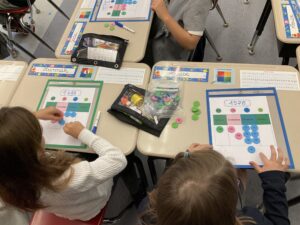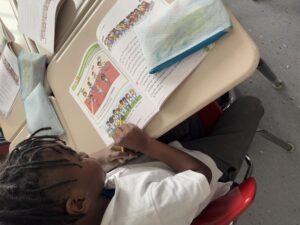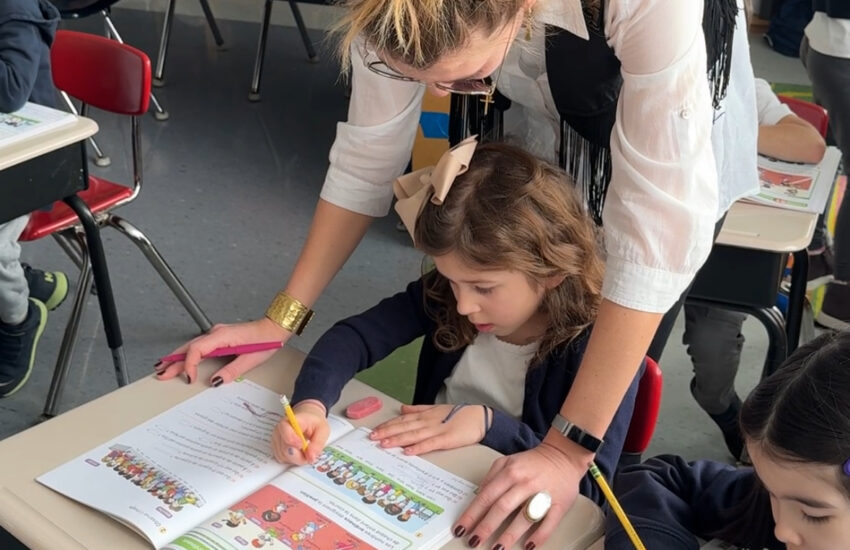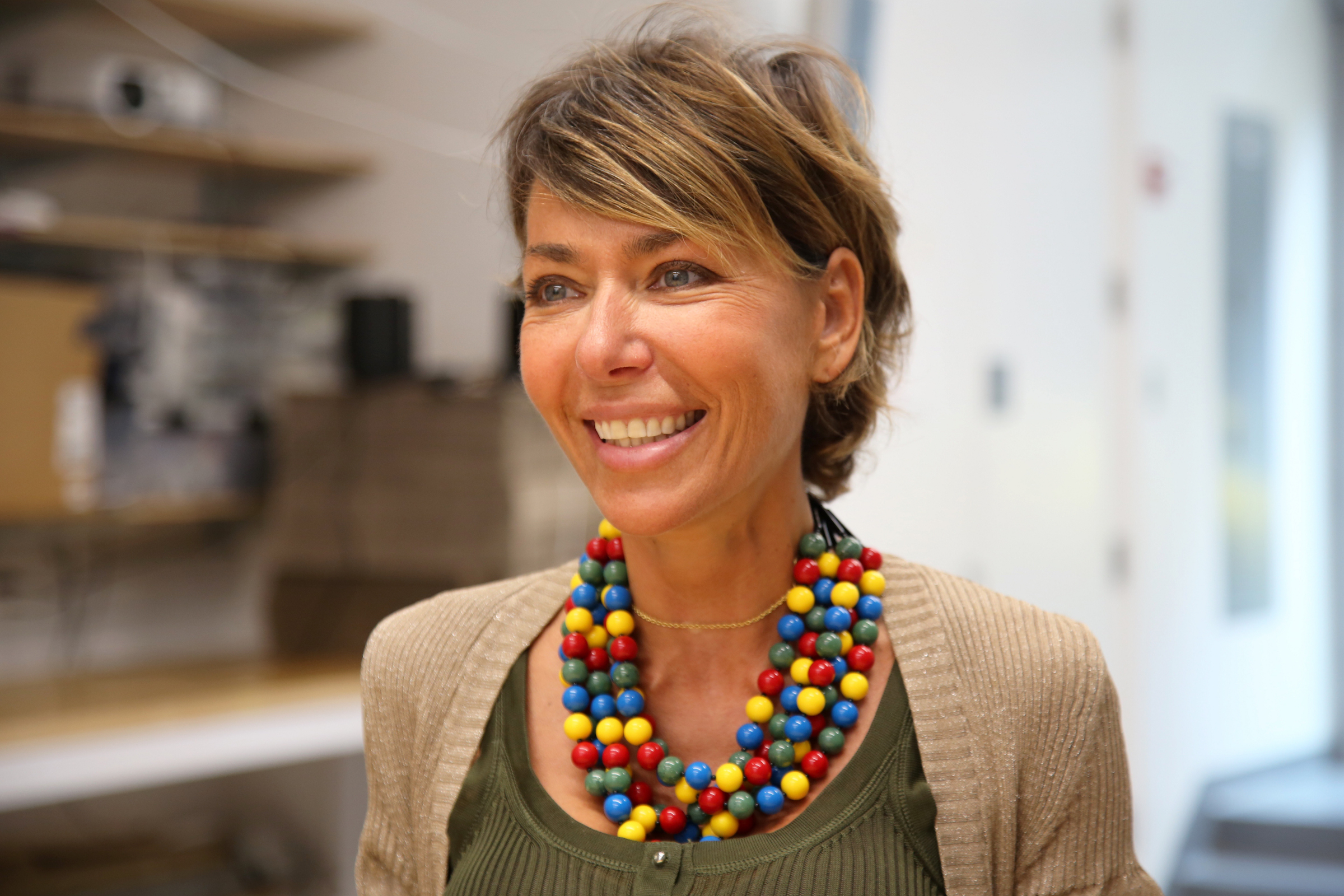Math education at the Lycée Français de New York is based on a comprehensive pedagogical approach. Students learn math in a structured progression, starting in Preschool, to gradually develop their skills and thinking. This year, the rigor of the French math curriculum has been enhanced in the Primary School with the integration of the renowned Singapore Method. This approach further strengthens each student’s ability to build a “math mindset” with confidence, flexibility, creativity, and joy.
This year marks a crucial step in how we teach math in the Primary School of the Lycée Français de New York, with the integration of the Singapore method into our French teaching practices. This initiative, which runs from Moyenne Section/Pre K to CE2/Y3, will be extended to 6e/Y6 next year.
To support teachers in the integration of this approach, Cécile Bourin, mathematics coordinator, has been brought on board. Her guidance is crucial, particularly in the training of teachers, who creating new lessons for our students that are centered on asking children the right questions and teaching them to answer them simply and effectively.
You may recall that Monica Neagoy, a renowned mathematician, international speaker and educational consultant, worked with us last year to review the way we teach math at school. Monica Neagoy shares a communicative passion for mathematics. Her approach is based on fostering a sense of wonder at the beauty of mathematics and developing concrete strategies to promote learning.

Building mathematical concepts: a gradual process
One of the key aspects of the Singapore method is the progressive construction of concepts, based on three pillars: language, manipulation and visualization. These elements enable children to acquire mathematical concepts in a natural and lasting way.
- Language: plays an essential role in expressing reasoning and structuring thought. Students are encouraged to verbalize their strategies and solutions, fostering a deeper understanding of concepts.
- Manipulation: Concrete activities are at the heart of learning. By manipulating objects, students explore mathematical relationships and develop their intuition.
- Bar visualization: Inspired by the Singapore method, this technique enables mathematical problems to be represented visually, facilitating their resolution and reinforcing students’ understanding.
This process leads to a progressive elaboration of abstraction, an essential skill for learning advanced mathematics. This step-by-step construction fosters a lasting apprehension of notions, avoiding systematic “shortcuts” that can hinder in-depth understanding.
Students are also invited to see mathematics as a unique language that enables them to describe the beauty of the world. This perspective motivates them to explore and appreciate the power of mathematics in everyday life and beyond.
Developing a “math mindset”
Our approach is backed by leading educational experts, including mathematician Rémy Brissiaud, who specializes in number development; Stanford researcher Jo Boaler, founder of Youcubed, which promotes a love of math; and cognitive psychologist Elisabeth Spelke, whose work explores how young children develop knowledge of objects, geometry, and mathematics.
Unlike more systematic approaches such as Russian mathematics, which emphasize mechanical, repetitive learning, our school aims to develop a “math mindset” in students. This means cultivating intellectual agility, a positive, curious and creative attitude towards mathematics, which will accompany them throughout their school life and beyond.
This approach, based on understanding and the joy of learning, provides a coherent pedagogical framework that prepares students to tackle highly complex concepts with confidence and motivation. Using tried-and-tested strategies adapted to each age group, we make mathematics a genuine field for discovery and development.

Strengths of the Singapore Method
From CP/Y1, students explore all four operations—addition, subtraction, multiplication, and division—in depth. Fractions are introduced in CE1/Y2 with a gradual, structured progression. Algebraic reasoning begins in CM1/Y4 and lays the foundation for advanced mathematics in 5e/Y7 and through high school.
The Singapore Method helps students understand math by moving from concrete to abstract thinking. First, they visualize problems using real objects, then represent them with diagrams, and finally transition to numbers and symbols.
This “concrete-pictorial-abstract” approach deepens understanding. Students start by manipulating physical objects like cubes, tokens, or rulers, then draw diagrams, and ultimately use numbers and symbols to solve problems. This structured, hands-on method enhances comprehension and retention.
Verbalization is also key: students ask questions, discuss ideas, and create stories around calculations. These interactions strengthen memory and encourage active learning.
Essential Training for Teachers
To put this new method into practice, in-depth teacher training is essential. With the support of Cécile Bourin, our coordinator, our teachers learn to use a variety of tools, such as manipulation kits, or even everyday objects, to enrich their teaching activities.
A School Looking to the Future
Our structured and innovative approach to math education equips students with both strong foundational skills and a genuine appreciation for the subject. By integrating engaging, research-backed methods, we help students develop confidence, critical thinking, and problem-solving abilities that prepare them for future challenges. We are committed to fostering intellectual growth in a supportive environment, ensuring that every student can approach mathematics with curiosity and competence.
Lycée families: Do not hesitate to ask our teachers, if you’d like to learn more about this approach to mathematics. Our entire educational team is here to support you in ensuring your child’s success.
About the Author :
Vannina Boussouf grew up on the Mediterranean island of Corsica, where bilingualism is an integral part of identity. She studied English and Spanish at the University of Corsica, and philology and letters in Cordoba, Spain, before starting a career as an elementary teacher and administrator. Vannina relocated to the United States in 2004, where she taught at the International School in Louisiana. She joined the Lycée in 2007 to direct the Primary School, and during her tenure, she has focused on innovative teaching methods that support the development of the whole child in a bilingual setting.


